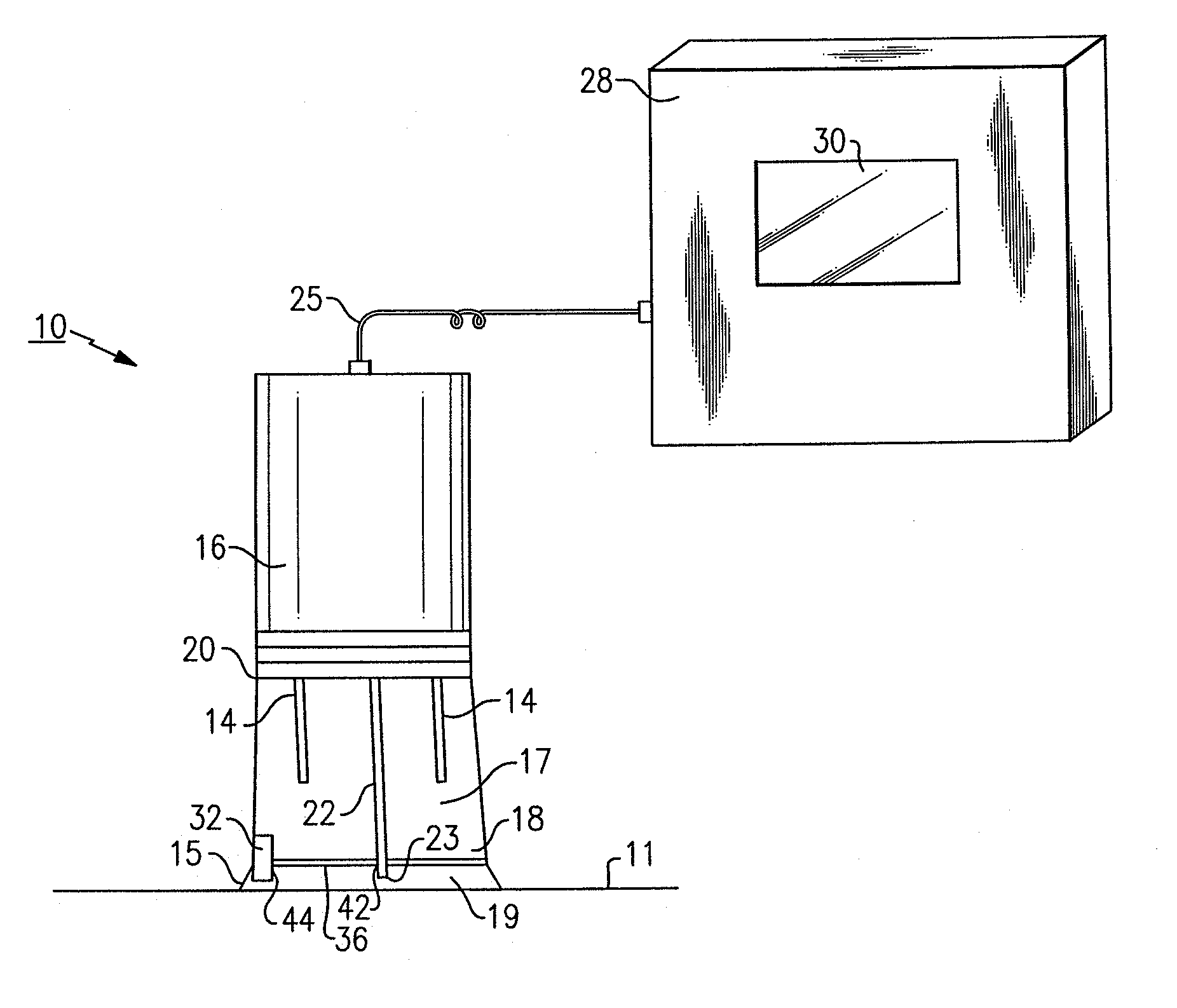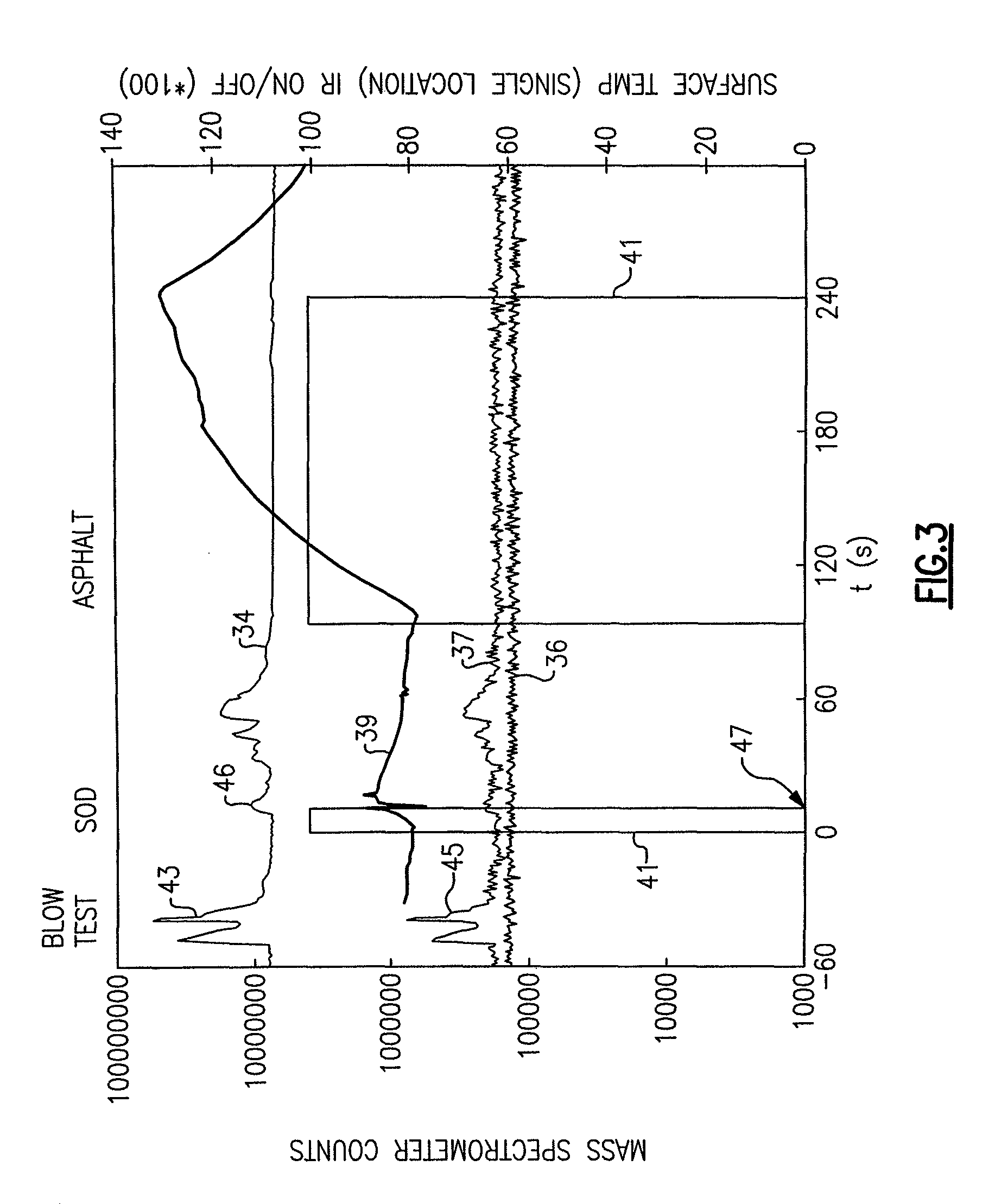Portable light emitting sampling probe
a light-emitting, sampling probe technology, applied in the direction of isotope separation, electric discharge tube, particle separator tube, etc., can solve the problems of difficult detection of persistent agents with traditional vapor-based standoff detectors, unsafe traversal area for a considerable period of time, and contamination problems, so as to improve the useful life of the probe, improve the efficiency and timely use, and mitigate contamination problems
- Summary
- Abstract
- Description
- Claims
- Application Information
AI Technical Summary
Benefits of technology
Problems solved by technology
Method used
Image
Examples
Embodiment Construction
[0034]The following relates to a portable light energy emitting sampling probe assembly that is used to desorb materials having a high boiling point or materials having a low or moderate vapor pressure from various surfaces, such as, for example, a grassy soil covered surface, a floor, or pavement. Moreover, “surfaces” as intended herein can refer to any matrix or object that can be examined. Throughout the course of discussion several terms, such as “upper”, “lower”, “above”, “below”“proximal”, “distal”, “internal”, “external”, and the like have been used in order to provide a suitable frame of reference with regard to the accompanying drawings. These terms are not intended to be limiting, however, except where so specifically indicated.
[0035]Referring to FIG. 1, there is shown an exemplary portable light energy emitting sampling probe assembly, generally labeled by reference numeral 10. The portable light energy emitting sampling probe assembly 10, according to this embodiment, is...
PUM
 Login to View More
Login to View More Abstract
Description
Claims
Application Information
 Login to View More
Login to View More - R&D
- Intellectual Property
- Life Sciences
- Materials
- Tech Scout
- Unparalleled Data Quality
- Higher Quality Content
- 60% Fewer Hallucinations
Browse by: Latest US Patents, China's latest patents, Technical Efficacy Thesaurus, Application Domain, Technology Topic, Popular Technical Reports.
© 2025 PatSnap. All rights reserved.Legal|Privacy policy|Modern Slavery Act Transparency Statement|Sitemap|About US| Contact US: help@patsnap.com



